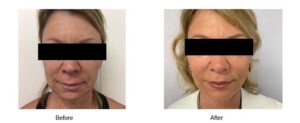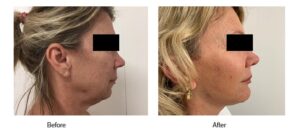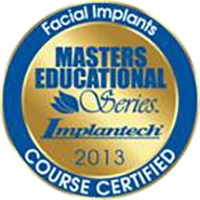The most typical signs of aging are lines and wrinkles, loose and excess skin, loss of volume, horizontal neck banding, double chin, and turkey neck. These are caused by changes in the elasticity of the skin and the underlying soft tissue framework of the face, known as the superficial musculoaponeurotic system, or SMAS. Presently, cosmetic procedures offer an array of alternatives that help to eliminate most of these ailments and rejuvenate your appearance simultaneously. Even though a lot of these products are fairly effective at rejuvenating the face, a standard facelift is still more effective and permanent. In all honesty, nothing comes close to or produces the same results as a facelift.
Face Lift: What Is It?
A facelift is a procedure that can be performed under general anesthesia or even mild sedation. Modern facelifts involve considerably more than just tightening the skin, as is frequently the case with them. During a contemporary facelift, extra skin is removed and the underlying muscles and SMAS tissue are tightened. After that, the remaining skin is redraped, giving the illusion of younger skin. There are many versions of this procedure: “deep plane”, “modified deep plane”, and others. Essentially, they all involve tightening of the “SMAS” and redraping of the “excess” skin.
What Distinguishes a Neck Lift From a Facelift?
A facelift, also known as a rhytidectomy, aims to treat sagging skin and wrinkles on the face, particularly in the jawline, jowls, cheeks, and lower face. Platysmaplasty, sometimes known as a neck lift, typically treats the skin around the neck and beneath the chin. These two operations are generally carried out in tandem for a full facial rejuvenation because the aging of the face and neck frequently occurs simultaneously, though platysmaplasty is not always indicated nor required.
What Conditions Does a Facelift Address?
A facelift procedure effectively addresses various concerns, including lines and wrinkles on the face and neck, excess or loose skin, diminished volume in facial features, and sagging jowls. By targeting these issues, the facelift aims to rejuvenate the appearance, tightening and smoothing the skin, restoring youthful contours, and providing a more lifted and refreshed look. This comprehensive procedure tackles multiple signs of aging, offering individuals a renewed and revitalized facial appearance with improved firmness and definition. Not all of the facial wrinkles can be improved or eliminated by a facelift. It is not uncommon to include additional procedures, such as lasers, or other modalities, to resurface the skin in order to create a smoother skin texture.
How Are Face Lifts Carried Out?
As mentioned earlier, facelifts can be performed under local, sedation, or general anesthesia. The options are determined by the surgeon’s, or patient’s, preferences or the complexity or combination of procedures. Following anesthesia, incisions are made along the earlobe’s natural crease in front of the ear and barely into the hairline. After employing tension-bearing sutures to raise and tighten the skin and SMAS together, the extra skin is cut off and the skin is redraped.
The ensuing scars after surgery are hidden well since they are positioned where the skin and face naturally crease into the hairline.
What To Expect From The Recovery Of a Facelift?
One to two weeks are normally needed for the initial healing after a facelift.
You won’t be allowed to drive after the treatment, so make sure you have a ride scheduled. You will be discharged home with dressings and gauze wrapped around your head and neck, an elastic bandage from your chin to the top of your head, and sutures or staples at the site of the incision. At your first follow-up session, which normally occurs one day after surgery, the elastic bandage is taken off. A drain could be installed to assist with the removal of any extra blood or fluid. You must clean these areas according to your doctor’s post-operative care instructions.
After the procedure, you may have pain and discomfort for several days. For you to get through the first week of recovery, your doctor could recommend a modest pain reliever. There may be some bruising and swelling, but they will go away by day four. During your second follow-up session, your bandages will typically be taken off, and a week later, your sutures or staples will be out.
After a week of recuperation, some patients are prepared to resume work, but many patients wait until most of the swelling and bruises have gone down, which is usually two weeks later. It could require a maximum of four to six weeks to resume your usual schedule. It is important no to engage in exercising or any heavy lifting or activities, since this may cause internal sutures to tear apart.
When Will I See The Results Of My Facelift?
Following the removal of bandages post-face lift, initial results become visible. However, the complete fruition of the procedure unfolds gradually throughout the healing journey. While some changes may be noticeable early on, the optimal outcomes continue to evolve. It’s essential to remain patient as the healing process varies for each individual. The transformation after a facelift is an ongoing journey, with results maturing and becoming more apparent with each passing month. Typically, it may take up to a year for the complete and final results to manifest, revealing the full extent of the facial rejuvenation achieved through the procedure.
How Are Neck Lifts Carried Out?
Deep sedation or general anesthesia is also used during neck lift procedures. The surgery can be performed as an outpatient or as an inpatient. A small incision is made beneath your chin to perform a neck lift. After that, extra skin and fat are cut away, and the neck muscles are raised and tightened. Depending on where the fat is placed, liposuction or surgery are the two methods available for removing it.
There are many types of neck lifts and the types will depend on many factors, including the age of the patient, the type of skin and/or muscle laxity, etc.
What Should I Anticipate From A Neck Lift Recovery?
Similar to a facelift, you will often leave your session with bandages over your neck and face to reduce bruising and swelling. Bandages will also be applied to the incision areas. Usually, the bandage covering your face and neck will be taken off during your initial follow-up visit. Additionally, you can have a drain to help get rid of extra blood and fluid.
Tightness in the neck is the most prevalent ailment experienced after neck lift surgery. This is a transient feeling that will go away in the weeks that follow your surgery. For the first 24 to 48 hours, you’ll probably feel some pain and discomfort, for which your doctor might recommend taking medication. Throughout the first week, this will also go away.
The resumption of normal activities is similar to a facelift. Typically, full recovery takes three to four months. Some improvements will be apparent right away, and the whole effect won’t become apparent until the swelling has fully subsided, which could take a few weeks.
What is The Duration Of Face and Neck Lifts?
About 10 to 15 years pass between a facelift and a neck lift. It’s crucial to keep in mind that while these treatments will make you look younger, aging is a natural process that cannot be completely stopped. Although your face and neck will still age, it will do so much more slowly than it would if you hadn’t had the surgery.
Understanding The Costs: Facelift Price and Neck Lift Price
The cost of a facelift and neck lift can vary significantly, contingent upon several factors. These include the geographical location of the surgical facility, the expertise of the surgeon, the complexity of the procedure, and additional expenses such as anesthesia, facility fees, and post-operative care.
Surgeons with extensive experience and a high demand for their expertise might charge at the upper end of this spectrum. Additionally, factors like the extent of correction needed, additional procedures combined with the facelift, and the type of anesthesia utilized can impact the overall cost.
It’s crucial to consult with a board-certified plastic surgeon (the American Board of Plastic Surgery is the only board recognized by the American Board of Medical Specialties). To obtain an accurate cost estimate tailored to your unique requirements. Moreover, some clinics offer financing options or payment plans to assist patients in managing the expenses associated with the surgery, ensuring accessibility to individuals seeking these transformative procedures.
Conclusion: Rediscover Your Timeless Beauty
Facelifts and neck lifts are not just cosmetic procedures; they are gateways to rediscovering timeless beauty and reclaiming confidence. As advancements continue to refine these procedures, individuals seeking a rejuvenated appearance can embark on a transformative journey toward embracing their most radiant selves.



